Bears have become more of a problem in many urban and suburban areas. Communities that never had to worry about bears before now have to think twice about a lot of what they do.
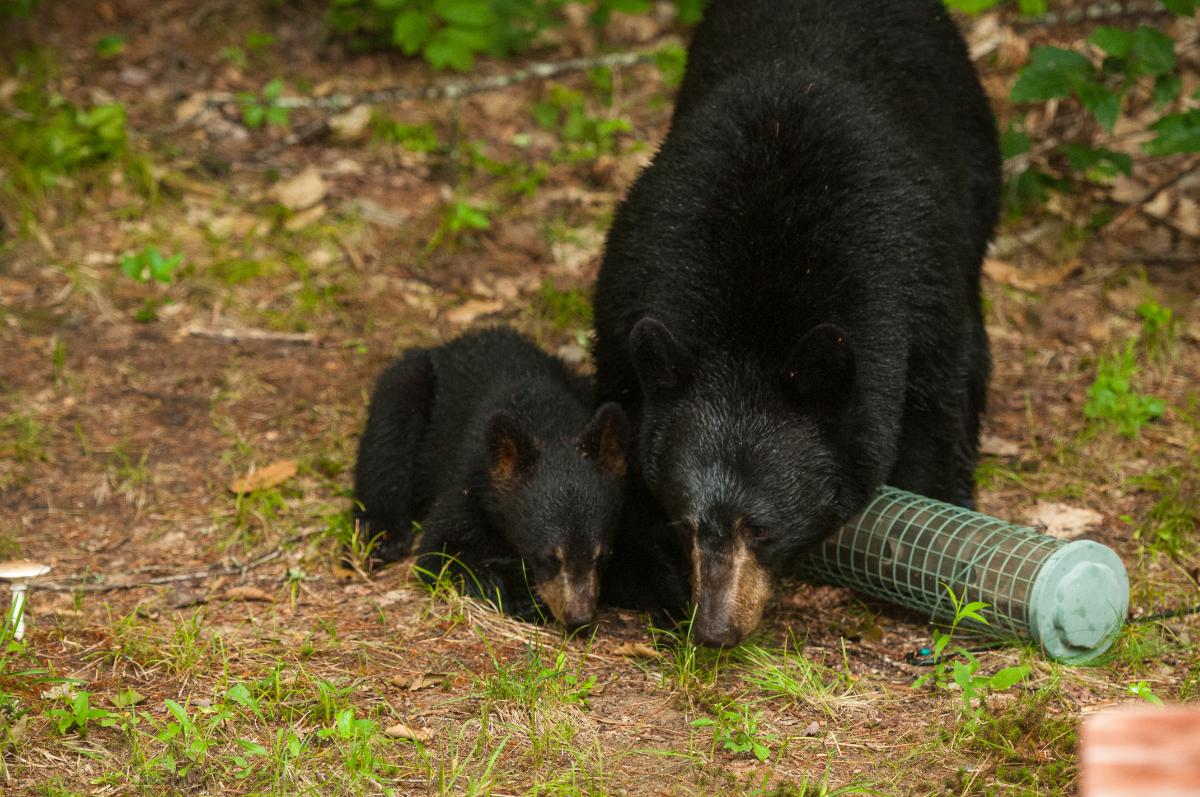
One of those considerations is feeding wild birds. Bird feeders are a major draw for bears. You want to do your part to support these feathery friends, especially through the harshest months of the year, but you also need to keep your home, yard, pets, and livestock (if you have them) safe.
How can you do it? Can you do it?
Can you feed birds and not feed bears?
Jump to:
- Why Bears Like Bird Feed
- Feed Birds, Not Bears!
- 1. Don’t feed birds during bear eating “prime time”
- 2. Wait to feed birds until bears should be hibernating
- 3. Stop feeding after a bear “attack”
- 4. Make some noise
- 5. Hang feeders out of reach
- 6. Choose bird food wisely
- 7. Keep the ground clean
- 8. Bring bird feeders in at night
- 9. Make your presence known
- Ways to Attract and Support Wild Birds Without Appealing to Neighborhood Bears
Why Bears Like Bird Feed
Experts at the Audobon Society say that bears like bird food for much the same reasons that birds do. The seed is similar to their natural diet, and it’s set out for them in an easy-access fashion.
Bird seed provides good nutrition and high energy. According to BearWise.org, a typical bird feeder that holds just seven pounds of seed can contain as much as 18,000 calories – that's a lot of sustenance for a bear that eats between 5,000 and 20,000 calories a day!
And yes, bears really do consume that many calories. The American black bear may be the smallest bear in North America, but even he (or she) eats 5,000 calories daily in the spring and summer. Calorie consumption jumps up to 20,000 calories a day in the fall when they’re packing on fat reserves to get ready for hibernation!
Bears can spend as many as 20 hours a day finding enough food to reach their needed caloric intake. So, you can see how a bird feeder sitting there with nearly their entire daily intake is a hard thing for a bear to resist.
Feed Birds, Not Bears!
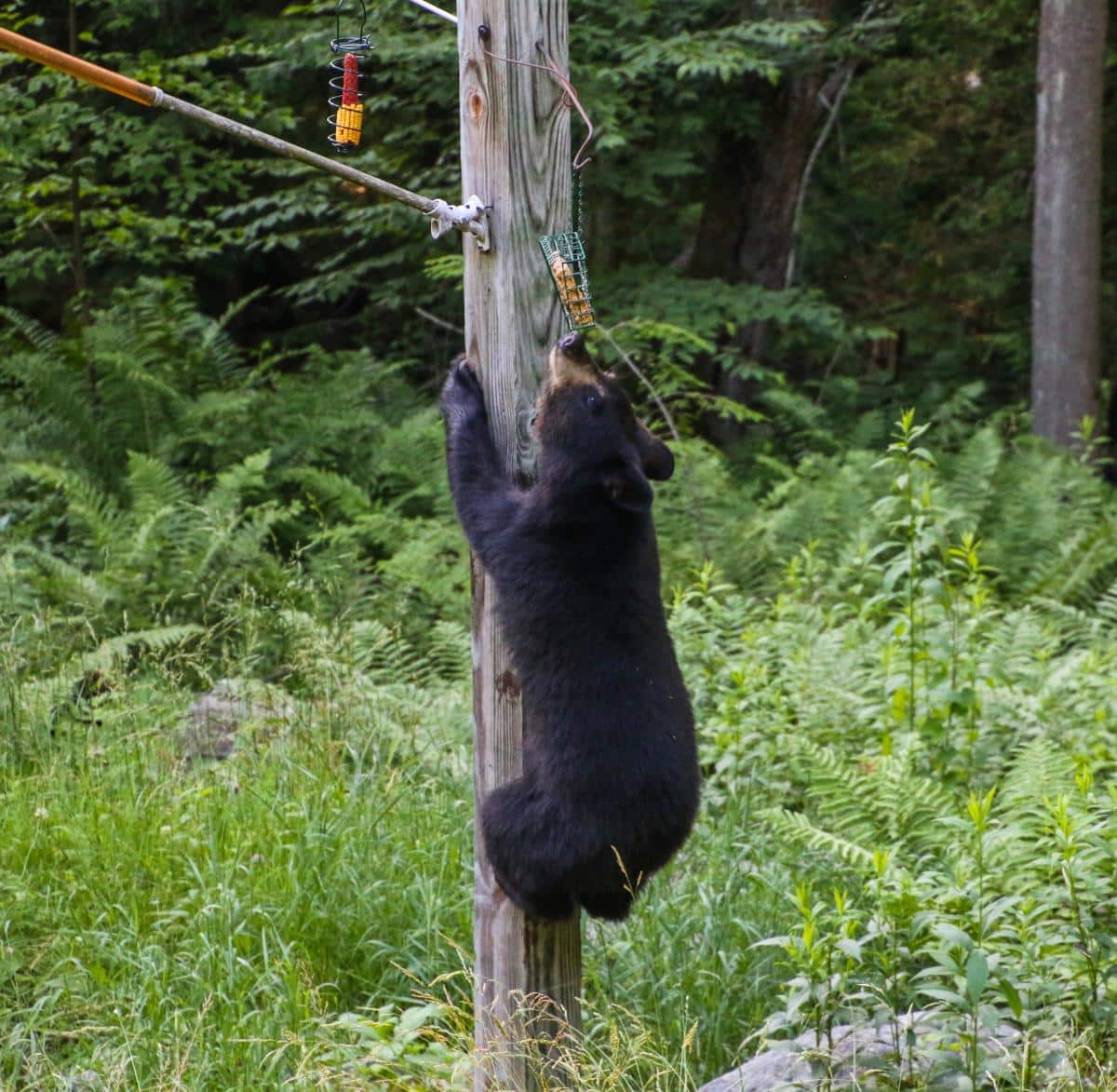
Truth be told, there is no way to guarantee 100% that bears won’t come to your feeders. Bears are resourceful animals with good memories when it comes to finding an easy and high-nutrition food source.
But there are a lot of things you can do to greatly reduce the odds. For many people, changing a few key things about how and when you feed wild birds is enough to keep bears at bay.
Here are some of the best ways to feed the birds without encouraging bears to make your yard their favorite restaurant:
1. Don’t feed birds during bear eating “prime time”
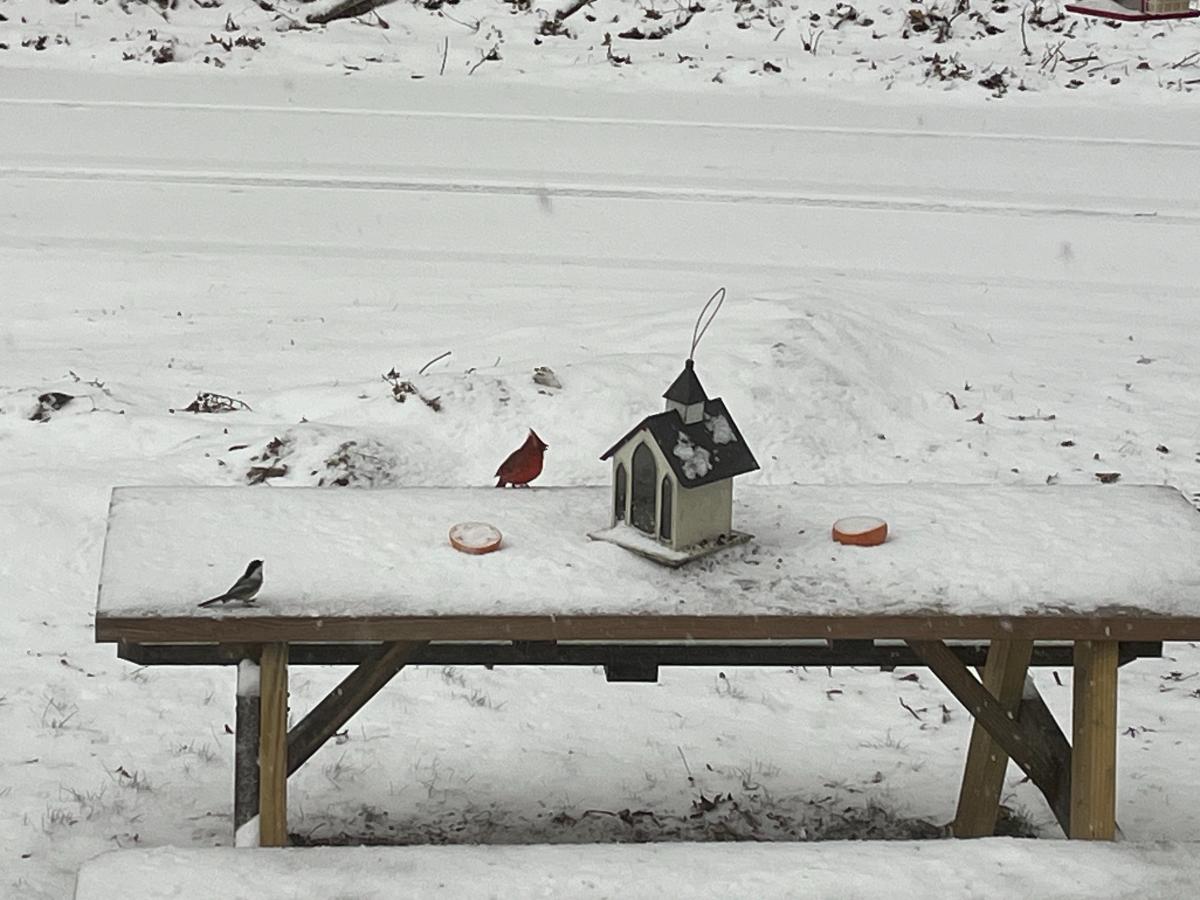
Bears eat significantly less food during the spring and summer, and they hibernate through the winter in many climates, especially colder climates. Even in temperate climates like Florida, bear activity is significantly lower in the winter.
So, the first and perhaps one of the most effective things you can do is not feed birds in the bears’ prime time foraging season, which is in the fall. Fall is when bears’ food consumption needs rise to four times what they are the rest of the year.
In the fall, bears need food, and a lot of it. If they don’t find it at your home, they’ll look for it elsewhere.
Though it varies by location, March through November is considered “prime time” for foraging bears and bear activity.
2. Wait to feed birds until bears should be hibernating
This one can be a little tough because warmer winters in many areas mean bears are not always going to bed as early as they used to. And if there is a thaw, they may wake up for a day or two mid-winter.
Overall, though, bears will be resting and using up all that stored fat in the winter months, so it’s the safest time to feed the birds.
You can check with local wildlife officials (whatever that body is where you live), and they should be able to tell you when it’s safest to feed birds without major risk of bears visiting. In most locations, it’s safe to start feeding birds in November or December.
Winter is also the time when you’re doing the most good for the birds. In mild months, when there is plenty of natural food around, birds don’t really need us that much. Timing bird feeding just during the lean winter months can be a happy – and quite beneficial – medium.
There are other ways to attract birds to your yard the rest of the year that bears just won't care that much about (check out our list below).
3. Stop feeding after a bear “attack”
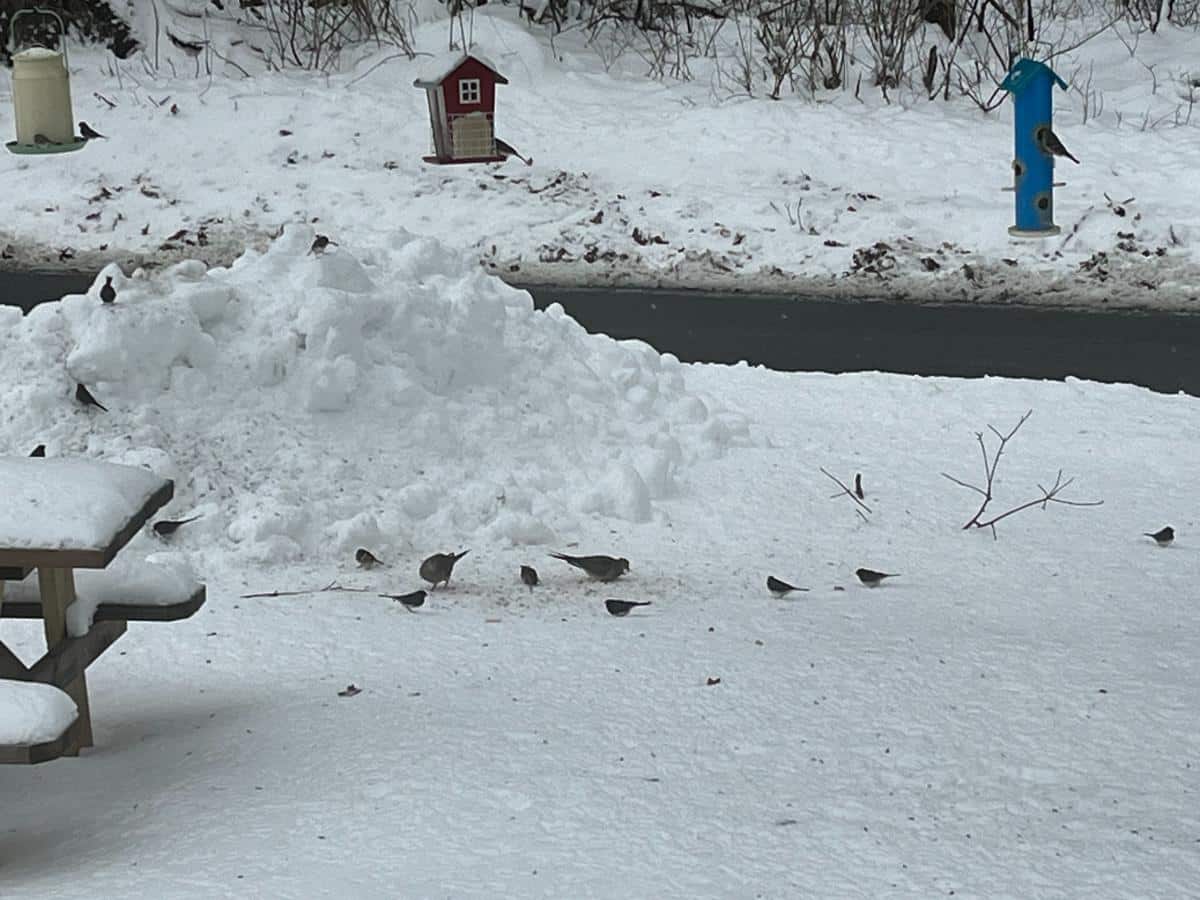
Not only do bears have great memories for food sources, but they also act on a sort of food “reward” system where they will become accustomed to humans, their yards, and the risks they incur there if they keep finding a ready food source.
Wildlife experts say this is one of the things that puts bears at risk—them becoming used to people and deciding it’s safe enough to eat in yards and out in the open. The more often they get away with it, the more comfortable they become with the idea.
If you know a bear has visited your yard or feeders, take the feeders in for two or three weeks and try to break the cycle.
If bears don’t see your source as reliable, they’re more likely to move on to one that is.
4. Make some noise
What acts as a reward and reassurance to bears is when they get away with raiding your bird feeder without consequence. If the bears get a good meal without feeling threatened, they will increasingly see this as a reward with little or no threat.
This does not, of course, mean that you should confront a bear. And you don’t need to harm them, either.
Stay in your home or go inside if you’re outside. Then, raise a racket. Bears are naturally skittish toward humans and even dogs. If you make your and/or your dog’s presence known from a safe distance, the bears will feel the threat and seek food elsewhere.
Bang on pots and pans. Yell out the window at the bear. Let your dog bark its fool head off—FROM INSIDE!
Don’t put yourself or your pet at risk, but do use what you both have to sound the alarm – and alarm the bear!
If a bear does become a regular nuisance, it’s best to report it to authorities. It’s likely getting too comfortable around humans, and that will become a risk to both human and bear life.
5. Hang feeders out of reach
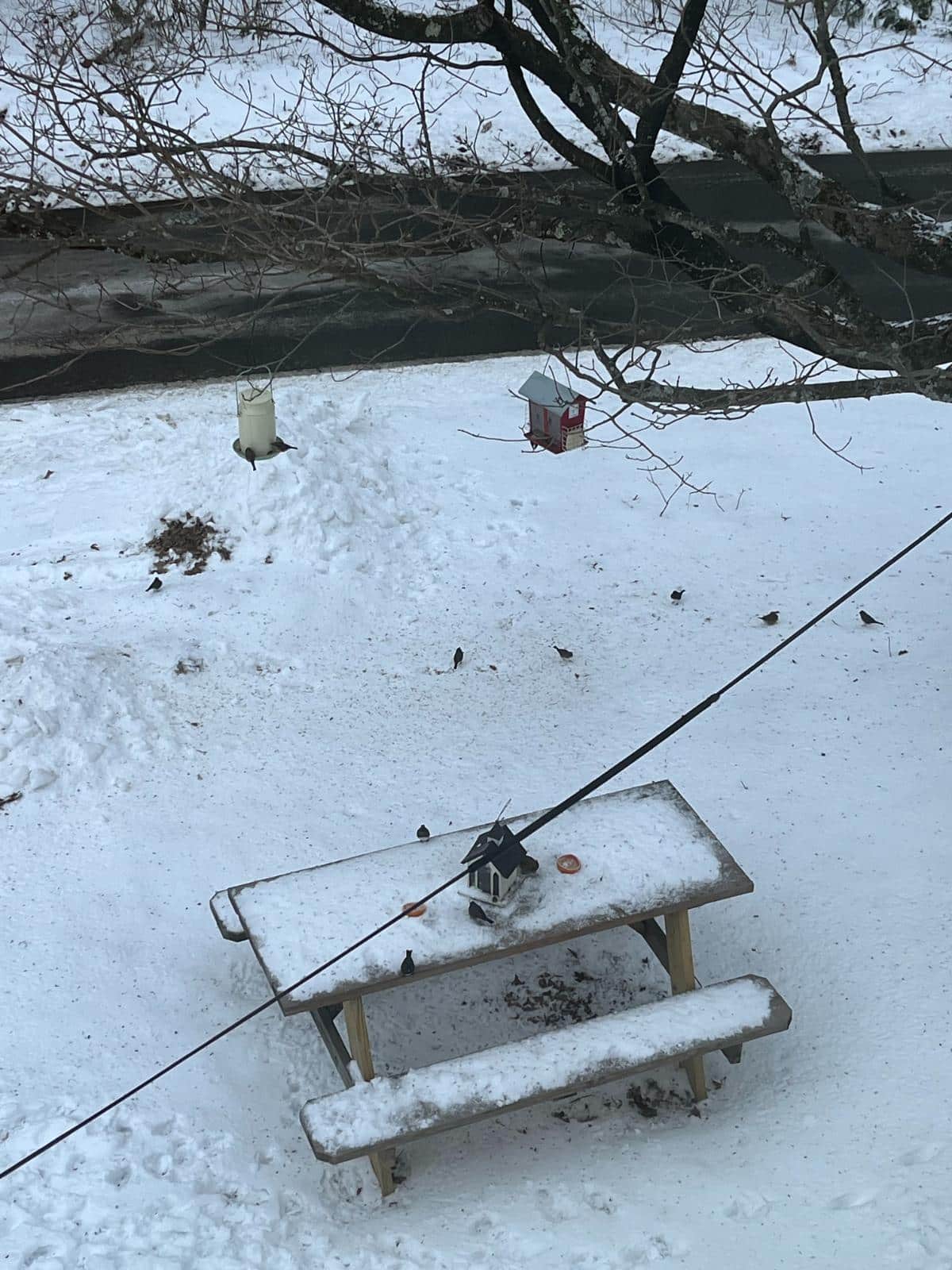
Bears can stand on their legs and reach up pretty high, but 10 feet is about as high as a bear can reach. If you hang feeders 12 feet or more off the ground, you should foil the bears. Hang bird feeders so that the bottom of the feeder is at 12 feet.
But there’s a catch. Bears are good climbers, too, and they can climb up trees with ease. They can also climb up things like retaining walls or even rough-sided walls (like stone walls).
Obviously, hanging feeders high and at an inconvenient bear height can make refilling them inconvenient for you, too. Here are some tips that can help:
- Hang feeders on a pulley system that you can raise and lower from the ground
- Hang feeders on a thin wire (150-pound test strength) from tree to tree or from a building (thin wire will be painful to the bears’ paws if they try to pull or climb on it)
- Use a hooked pole to lift your feeders up and down
- Hang feeders from hooks outside second-story windows
- Use window bird feeders that suction cup to windows and hang them above bears’ reach
If you’re hanging feeders from tree branches, because those bears can climb, you’ll need to do something to keep them from just climbing up and out to grab your feeders:
- Wrap a section of the trunk in metal flashing (like what is used for roofing). The smooth surface makes it hard for bears to get a grip and climb up
- Hang feeders out on thinner branches that can hold the weight of the feeder but not support the bear’s weight
A tall pole can make it difficult for bears to access feeders. You may be able to raise and lower the pole to fill the feeder. There are also bird feeders that are designed to be bear-proof.
6. Choose bird food wisely
You’ve probably noticed that there are seeds that birds like more than others, and some seeds they waste and scratch out of the feeders. Likewise, there are some seeds bears like more than others.
There are other bird food ingredients that bears find off-putting, too. Choosing a feed that puts bears off can make them look elsewhere for food.
- Sunflower seeds have a strong smell that bears can detect from quite a way away, so you might rethink using it.
- Seed mixtures that contain capsaicin (the natural chemical that makes hot peppers feel hot) are deterrents for bears (and also squirrels).
- The capsaicin won’t hurt the birds, and in fact, birds don’t feel the burn from capsaicin, but bears do (so do squirrels and other mammals). And they don’t like it—so they’re not likely to sample your feeder again.
- Suet is a good source of fat and energy for woodpeckers and other wild birds, but bears love it, too, so if you’re feeding it, choose one of the “hot” kinds of suet that contain hot peppers or capsaicin.
- You can also find hot wild bird seed mixes and sunflower seeds mixed with capsaicin or hot peppers.
- There are hot pepper oil mixes you can add to your bird feeders that you can order online.
- You can make your own “hot” mix by mixing cayenne pepper, dried red pepper, red pepper flakes, or chili powder in with your seed. Mix three tablespoons for each pound of seed.
- Mixing a little vegetable oil into the mix helps dried pepper powder stick to the seed better and stay evenly dispersed.
There are other types of seed that birds love but bears don’t care for (and some of these are just the right choice for inviting in certain types of birds, like finches and chickadees). Here are some seed recommendations just for the birds:
- Nyjer seed
- Thistle seed
- Safflower seed
7. Keep the ground clean
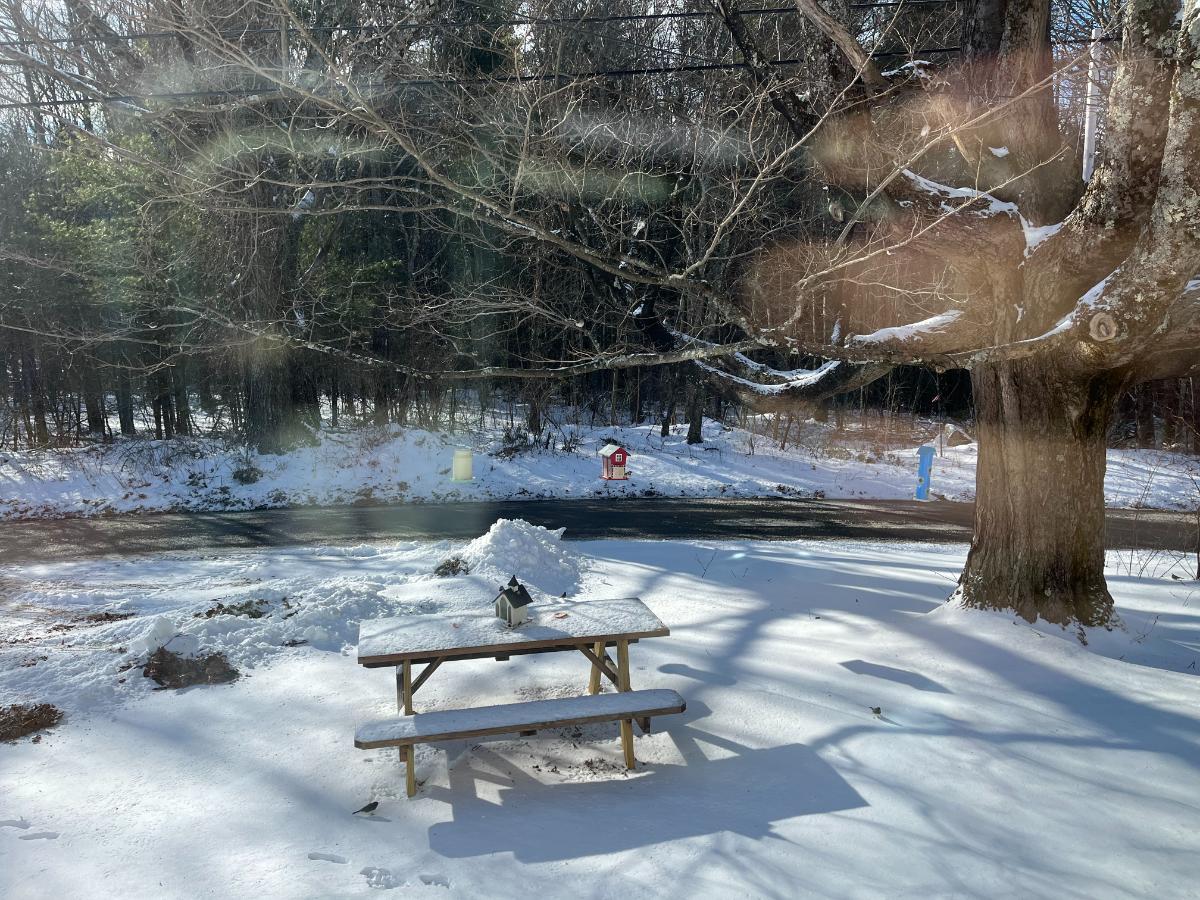
Even if you do everything else right and hang your feeders out of reach, if the birds waste seeds and leave a buffet on the ground, bears may still come. Take some pains to reduce seed waste and keep the ground clean and free of feed on the ground:
- Use feeders with bottom trays to catch the dropped seed
- Rake or sweep up excess seed off the ground below feeders
- Watch the feeders and the seed and see what your birds like
- Stay away from seed mixtures that result in a lot of waste—avoid those with seeds the birds scratch out and discard
8. Bring bird feeders in at night
Bears like to avoid people and are mostly nocturnal, feeding at night or late and early in the day. If you bring your feeders in at dusk and take them back out after sunrise in the morning, you can often thwart the bears.
Truth be told, this recommendation is mixed in its effectiveness. The reason for that is that if the bears really think your delicious, easy banquet is worth it, they may figure this out and adjust their visitation times.
This trick can work, though, especially if you combine the effort with other top tips, like feeding “hot” bird feeds and keeping the ground clear of dropped or wasted seeds.
9. Make your presence known
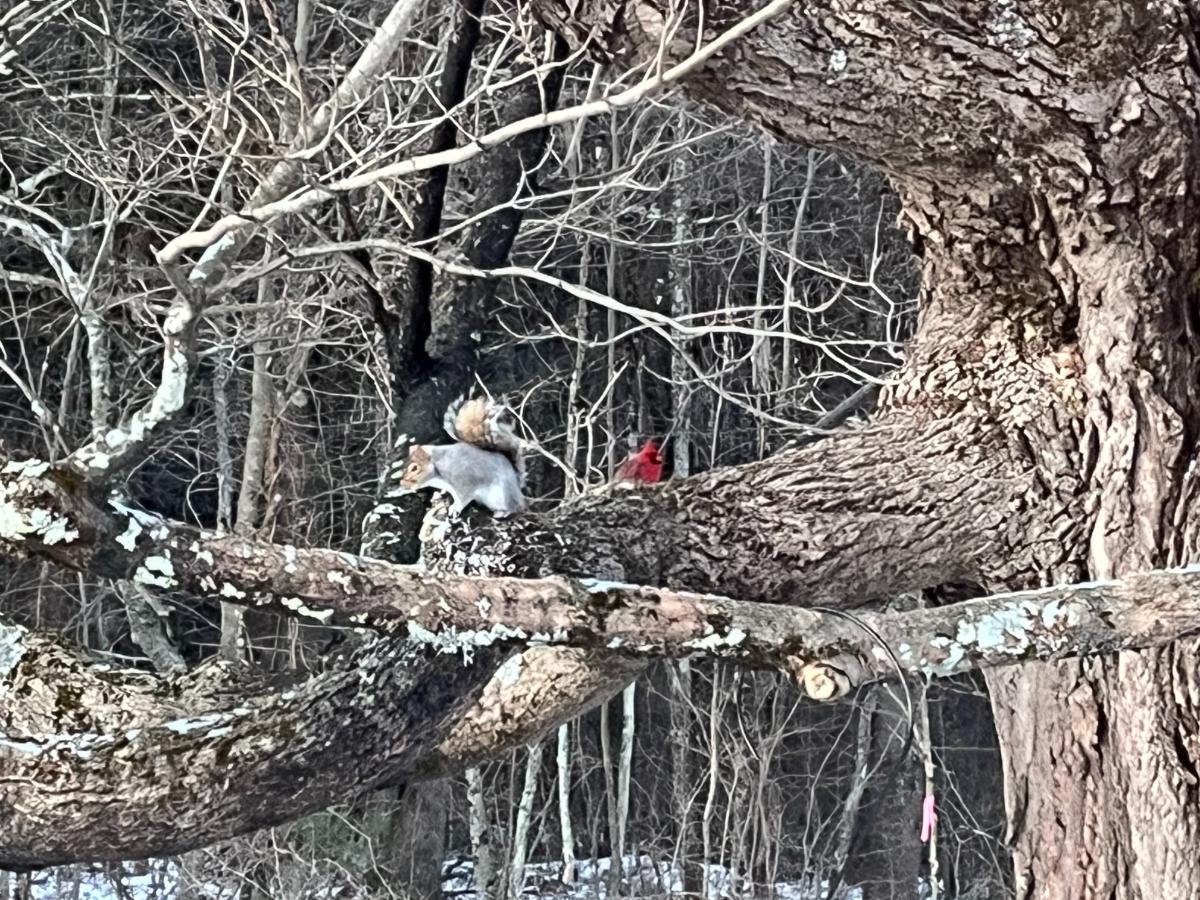
Unless they become comfortable and accustomed to being around people, bears will generally shy away from homes. Active dogs and pets and active people in the yard make bears think twice.
Of course, if a bear shows up when you or your children or pets are outdoors, everyone should go inside, close doors, and raise a ruckus from a safe, protected distance.
Other ways to make a human presence known are to install motion-sensor lights for nighttime or play music outside during the day.
Just know that bears are rather good at working around known routines, so it’s best to do these things as randomly as possible.
Ways to Attract and Support Wild Birds Without Appealing to Neighborhood Bears
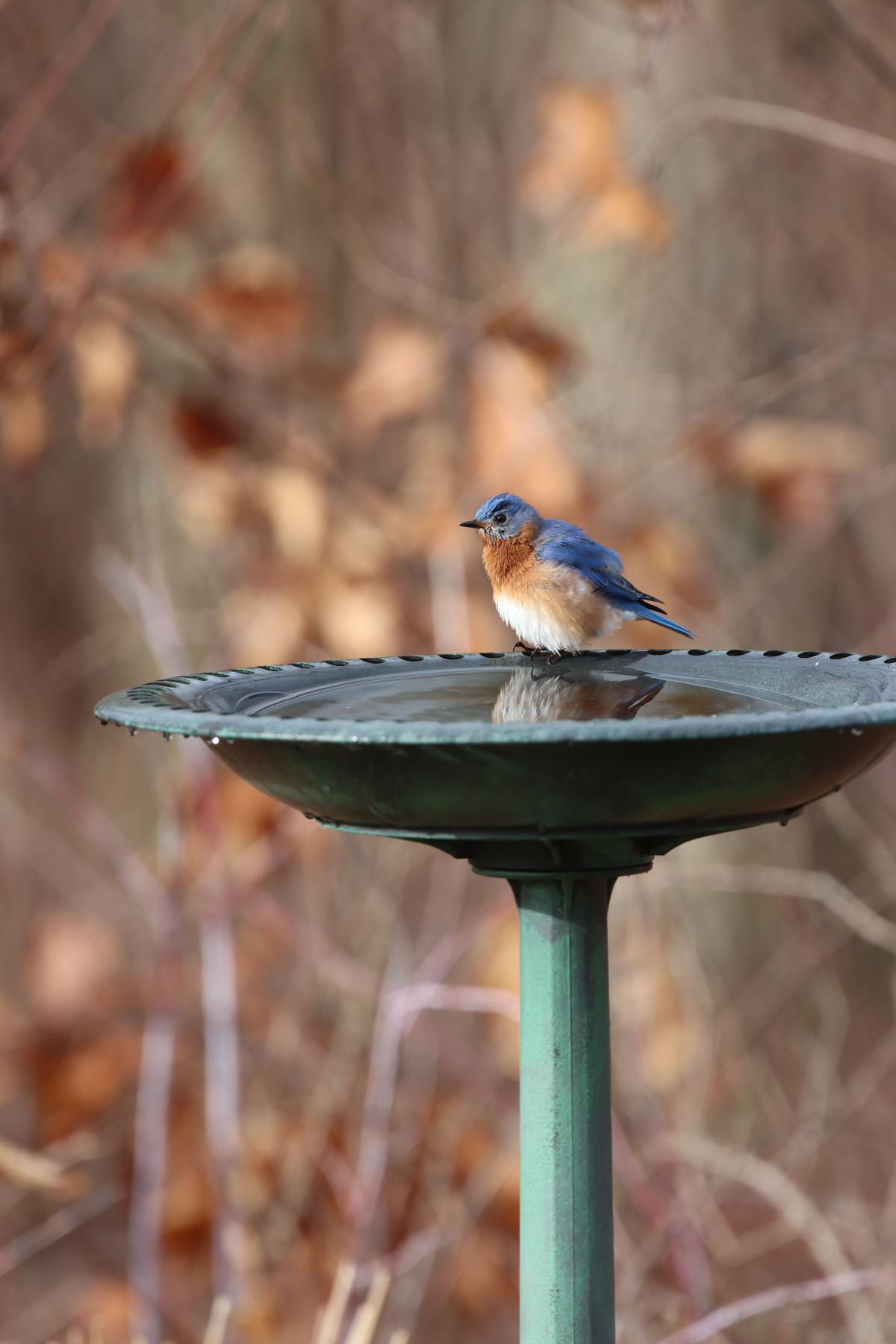
Feed is the main attraction for birds in the winter, but throughout the year, there are other ways that you can encourage birds to visit your yard or even to make your home theirs.
Attracting birds in other ways will give you the pleasure of their enjoyment and the benefits of their presence and will show them that this is a place worth living in and setting up a house. That should keep more non-migratory birds in your yard in the winter to begin with.
A lot of what is attractive to birds is of little to no interest to bears. These include things like
- Adding bird baths and water features
- Planting native shrubs and bushes that feed and shelter birds
- Providing places to perch
- Planting other food and energy sources for birds, like flowers for nectar and pollen
- Planting blossoming fruit trees (and, in the fall, cleaning up fallen fruit that might provide food for bears)
- Planting pollinator-friendly flowers and wildflowers that hummingbirds and other nectar collectors need
- Hanging houses for birds to live in
- Inviting insectivorous birds (which can help you control caterpillars and other problem pests, too!)
Having bears get too comfortable in your yard isn’t good for you, your family, pets, or animals, and it isn’t good for the bears, either. These are the bears who are more likely to meet a sad end or get too close for comfort with traffic and cars.
With a little effort and good management, you can enjoy both watching and supporting the birds in your area. Feed birds, not bears!

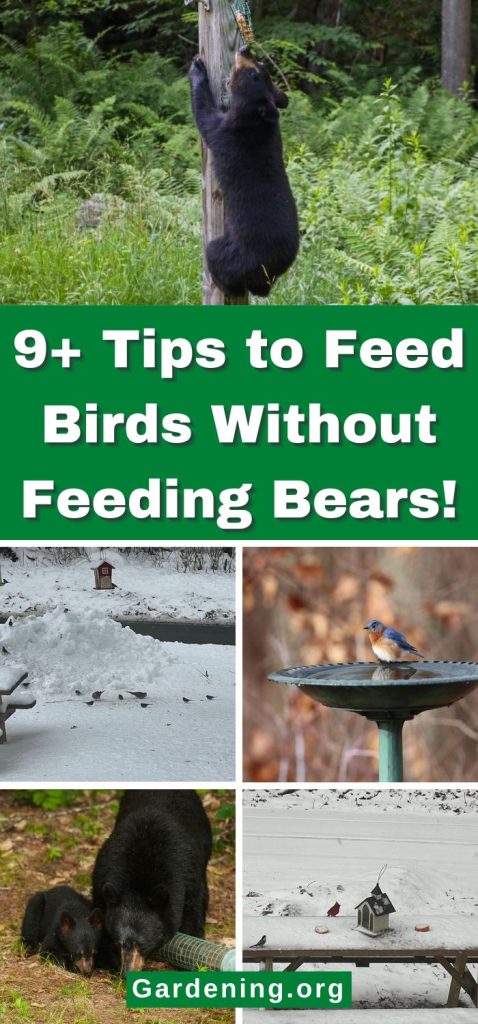
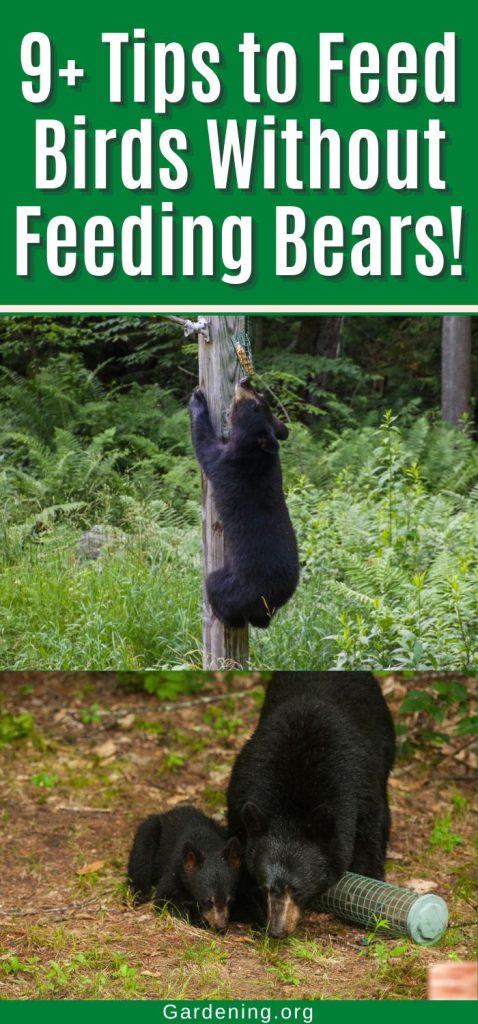
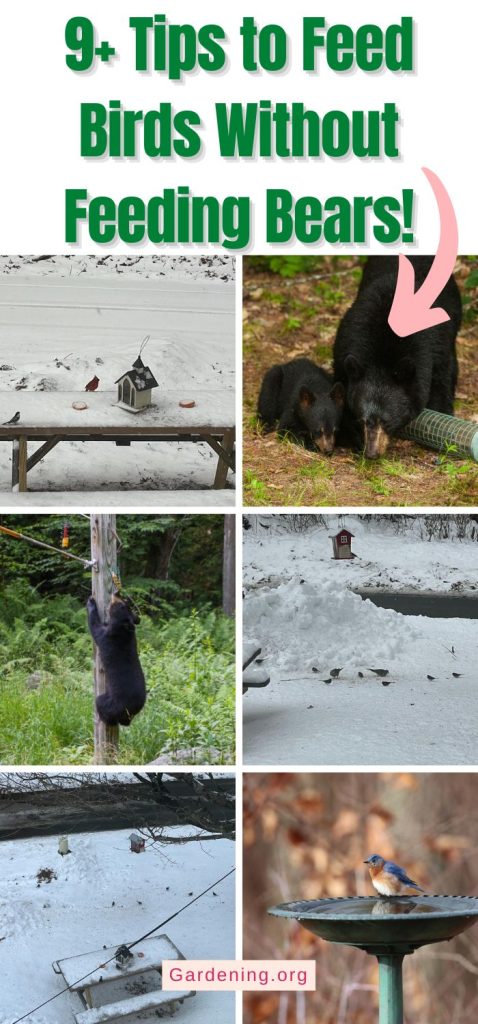
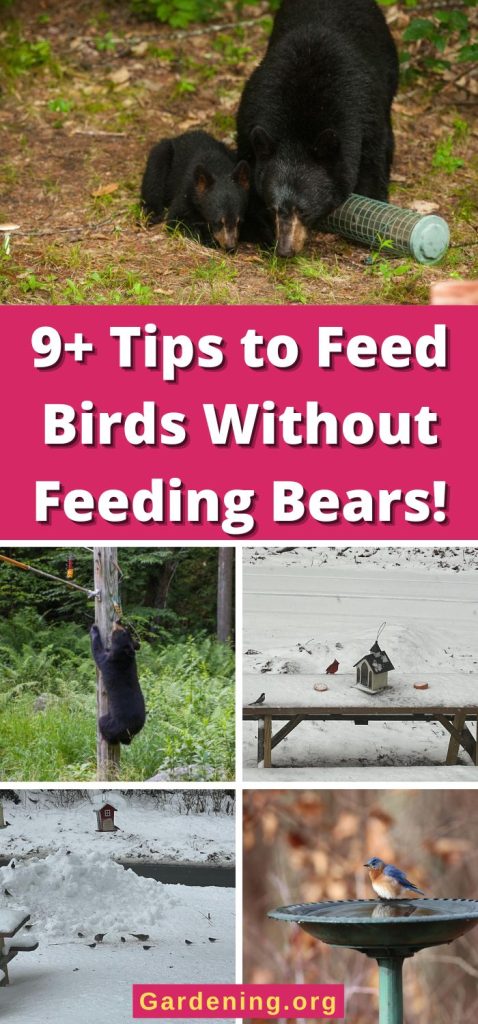




Leave a Reply